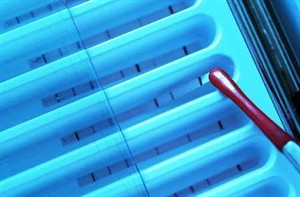Cochrane Review of RDT for diagnosis of drug resistant TB

While there are a number of different drugs available to people suffering from tuberculosis (TB), resistance to these drugs is a growing problem. People suffering from a drug-resistant strain of TB are more likely to die from the disease, and require treatment with what are described as “second-line” drugs. These drugs can cause more side effects and must be taken for longer.
A rapid and accurate test that could identify people with resistant TB, including a type of TB that is resistant to almost all anti-TB drugs, called XDR-TB, is likely to improve patient care and reduce the spread of drug-resistant TB.
GenoType® MTBDRsl is the only rapid test that detects resistance to second-line fluoroquinolone (FQ) drugs and second-line injectable drugs (SLID) as well as detecting XDR-TB. MTBDRsl can be performed on TB bacteria grown from sputum, which is called indirect testing and can take a long time, or can be performed immediately on sputum, which is called direct testing.
The authors reviewed the results from 21 studies, 14 of which reported the accuracy of MTBDRsl with direct testing, five of which looked at indirect testing and two of which looked at both.
By indirect testing, the test detected 83% of people with FQ resistance and rarely gave a positive result for people without resistance. In a population of 1000 people, where 170 have FQ resistance, MTBDRsl will correctly identify 141 people with FQ resistance and miss 29 people.
Of the 830 people who do not have FQ resistance, the test will correctly classify 811 people as not having FQ resistance and misclassify 19 people as having resistance. By direct testing, the test detected 85% of people with FQ resistance and rarely gave a positive result for people without resistance.
By indirect testing, the test detected 77% of people with SLID resistance and rarely gave a positive result for people without resistance. In a population of 1000 people, where 230 have SLID resistance, MTBDRsl will correctly identify 177 people with SLID resistance and miss 53 people.
Of the 770 people who do not have SLID resistance, the test will correctly classify 766 people as not having SLID resistance and misclassify four people as having resistance. By direct testing, the test detected 94% of people with SLID resistance and rarely gave a positive result for people without resistance.
By indirect testing, the test detected 71% of people with XDR-TB and rarely gave a positive result for people without XDR-TB. In a population of 1000 people, where 80 have XDR-TB, MTBDRsl will correctly identify 57 people with XDR-TB and miss 23 people. In this same population of 1000 people, where 920 do not have XDR-TB, the test will correctly classify 909 people as not having XDR-TB and misclassify 11 people as having XDR-TB. There was insufficient evidence recorded to determine the accuracy of MTBDRsl by direct testing for XDR-TB.
Dr Grant Theron from The University of Cape Town, lead author of the review said: “Our review shows that in adults with TB, a positive result for second-line drugs, either fluoroquinolone or injectable, or XDR-TB can be treated with confidence. However, given that a number of people tested negative while having a resistant strain, clinicians may still want to carry out conventional testing in some cases.”
Media Contact
All latest news from the category: Health and Medicine
This subject area encompasses research and studies in the field of human medicine.
Among the wide-ranging list of topics covered here are anesthesiology, anatomy, surgery, human genetics, hygiene and environmental medicine, internal medicine, neurology, pharmacology, physiology, urology and dental medicine.
Newest articles

Silicon Carbide Innovation Alliance to drive industrial-scale semiconductor work
Known for its ability to withstand extreme environments and high voltages, silicon carbide (SiC) is a semiconducting material made up of silicon and carbon atoms arranged into crystals that is…

New SPECT/CT technique shows impressive biomarker identification
…offers increased access for prostate cancer patients. A novel SPECT/CT acquisition method can accurately detect radiopharmaceutical biodistribution in a convenient manner for prostate cancer patients, opening the door for more…

How 3D printers can give robots a soft touch
Soft skin coverings and touch sensors have emerged as a promising feature for robots that are both safer and more intuitive for human interaction, but they are expensive and difficult…





















